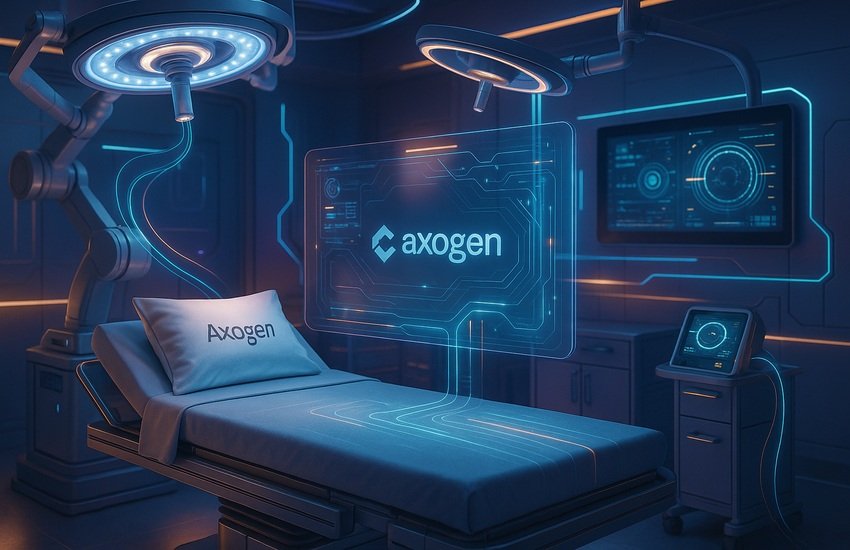Continue Reading With Our 7-Day Free Trial
Baker Hughes Eyes Chart Industries: A $13.6B Bet On LNG & Digital Power
Baker Hughes is reportedly nearing a $13.6 billion all-cash acquisition of Chart Industries, potentially derailing Chart’s previously announced all-stock merger with Flowserve. The proposed deal, which values Chart at $210 per share—a 22% premium to its latest closing price—marks a significant strategic pivot by Baker Hughes toward enhancing its footprint in liquefied natural gas (LNG), nuclear energy, and digital infrastructure, particularly data centers. By superseding the $19 billion Flowserve-Chart merger agreement from June, Baker Hughes aims to consolidate its position in high-growth, energy-adjacent sectors through vertical integration and technology enhancement. This potential acquisition comes on the heels of Baker Hughes’ strong Q2 2025 performance, where the company posted $1.21 billion in adjusted EBITDA and highlighted robust momentum in Industrial & Energy Technology (IET), particularly from power equipment orders tied to data centers. Here’s a closer look at the four key drivers behind this potential acquisition and how it may unlock synergies across Baker Hughes’ diverse portfolio.
Expanding LNG Infrastructure & Equipment Synergies
A core rationale behind Baker Hughes’ interest in acquiring Chart Industries is the complementary fit between Chart’s cryogenic equipment and process technologies and Baker Hughes’ existing gas infrastructure offerings. Chart brings deep expertise in storage tanks, heat exchangers, and liquefaction systems, which could significantly strengthen Baker Hughes’ ability to provide turnkey solutions for LNG projects. Baker Hughes has already secured $2.9 billion in gas infrastructure equipment orders over the past six quarters and anticipates further acceleration in LNG activity with expectations of 60 million tons per annum (MTPA) in new FIDs over the next 18 months. Integrating Chart’s portfolio would expand Baker Hughes’ vertical integration capabilities, potentially enhancing project margins and accelerating delivery timelines. Additionally, Chart’s specialization in modular and scalable LNG systems could allow Baker Hughes to address demand from smaller-scale or regional LNG deployments, diversifying its customer base beyond traditional mega-projects. As LNG demand is projected to increase by 75% through 2040, driven by growing energy consumption and the shift toward lower-carbon fuels, the combined entity would be well-positioned to benefit from these secular tailwinds. The integration could also reduce supply chain complexity, streamline procurement for shared components, and provide significant cross-selling opportunities across both legacy customer bases. These operational synergies would reinforce Baker Hughes’ competitive positioning in global LNG infrastructure and offer more durable earnings through life cycle service contracts and aftermarket revenues.
Strengthening Data Center Power Generation Capabilities
One of the most immediate and strategic synergies from the Chart Industries acquisition would be enhancing Baker Hughes’ growing presence in the data center power market. Baker Hughes has aggressively targeted this sector with its NovaLT gas turbines, securing over $650 million in data center-related orders year-to-date and reaching nearly 1.2 gigawatts in installed or contracted capacity. Chart’s expertise in cryogenic systems and industrial gas processing is crucial in managing the cooling and energy needs of hyperscale data centers, particularly those deploying hydrogen or LNG as power sources. The acquisition would allow Baker Hughes to deliver more integrated, behind-the-meter power systems that combine its turbines with Chart’s storage and heat transfer technologies. This alignment supports not only immediate energy generation needs but also longer-term decarbonization goals through hydrogen readiness and carbon capture. Furthermore, the surge in power demand from artificial intelligence workloads and the proliferation of cloud infrastructure is creating a lasting addressable market for decentralized, flexible power solutions—precisely where a combined Baker Hughes-Chart offering could shine. This integration would also reinforce the services business, as both firms maintain extensive long-term maintenance and performance contracts, potentially increasing Baker Hughes’ exposure to high-margin, recurring revenues. Finally, given Chart’s existing relationships with industrial and energy customers, Baker Hughes could gain entry into new project pipelines and geographical markets, especially in North America, where data center power reliability is under increasing scrutiny due to grid constraints.
Enhancing Nuclear & Hydrogen Infrastructure Exposure
Beyond LNG and data centers, the acquisition of Chart Industries would deepen Baker Hughes’ footprint in emerging clean energy verticals, particularly nuclear power and hydrogen infrastructure. Chart is a recognized player in cryogenic hydrogen storage and transport, having participated in projects supporting hydrogen blending, mobility, and storage. This complements Baker Hughes’ recent momentum in new energy, where the company booked $1 billion in orders during Q2 2025 alone, and expects to exceed the $1.6 billion full-year target. Hydrogen infrastructure is capital-intensive and technologically complex, requiring the kind of modular, scalable solutions Chart provides in heat exchangers and vacuum-insulated pipe systems. Similarly, Chart’s experience in supporting small modular reactors (SMRs) and advanced cooling technologies fits into Baker Hughes’ broader strategy of supporting next-generation nuclear as a zero-emission baseload power option. With global decarbonization trends accelerating and clean hydrogen gaining traction through incentives and regulatory support in both the U.S. and EU, the combined company would be better positioned to serve clients developing long-term energy transition projects. These capabilities would not only enhance project bidding competitiveness but also allow Baker Hughes to provide end-to-end solutions across storage, processing, and compression, thus increasing wallet share. The acquisition could also unlock new R&D synergies by consolidating engineering teams around next-generation materials and process designs. Moreover, Baker Hughes’ ability to scale production and manage global operations provides a commercialization runway for several of Chart’s earlier-stage innovations, potentially reducing time-to-market and improving cost efficiencies.
Bolstering Industrial Technology & Portfolio Optimization
Baker Hughes has been actively optimizing its portfolio to focus on high-margin, recurring revenue businesses, exemplified by its recent divestitures of Surface Pressure Control and Precision Sensors & Instrumentation and the acquisition of Continental Disc Corporation. Integrating Chart Industries would be consistent with this strategy, particularly in enhancing the Industrial & Energy Technology segment, which already posted a record backlog of $31.3 billion in Q2. Chart’s presence in high-performance industrial gas systems and heat exchangers would complement Baker Hughes’ existing industrial product suite and allow for broader engagement with sectors such as chemicals, semiconductors, and pharmaceuticals—all of which are pursuing efficiency and electrification. Additionally, Chart’s relationships and technologies could extend the life cycle value proposition of Baker Hughes’ offerings through improved integration and bundled service contracts. The combined engineering, procurement, and fabrication capabilities could also lead to better capex efficiency and project execution. From a capital allocation perspective, Baker Hughes’ solid balance sheet—with $3.1 billion in cash and 0.6x net debt-to-EBITDA—offers the flexibility to pursue large-scale acquisitions like this while maintaining shareholder returns. However, integration risks, particularly in aligning supply chains and systems, must be carefully managed. Nonetheless, the acquisition fits into Baker Hughes’ vision of shifting toward more stable, life cycle-oriented businesses and could accelerate its transition from a cyclical oilfield service provider to a diversified energy technology company.
Key Takeaways
Baker Hughes’ potential acquisition of Chart Industries represents a bold strategic move aimed at reinforcing its presence in LNG, nuclear energy, and digital infrastructure. While the acquisition would override Chart’s previous deal with Flowserve and unlock multiple operational synergies—ranging from expanded equipment offerings to enhanced new energy capabilities—it also comes with challenges. Integrating a capital-intensive business like Chart into Baker Hughes’ platform could strain near-term resources and execution bandwidth, particularly given ongoing macro volatility and tariff headwinds. Additionally, the company’s LTM enterprise value to EBITDA multiple has risen from 8.85x in Q2 to 10.48x as of late July 2025, suggesting a more expensive valuation backdrop relative to historical norms. At a trailing P/E of 15.2x and EV/sales of 1.78x, Baker Hughes is trading at a premium to its historical averages, which may constrain further multiple expansion. As such, while the acquisition has the potential to reinforce Baker Hughes’ strategic pivot toward energy technology and infrastructure, its success will ultimately depend on execution discipline, integration efficiency, and the ability to capitalize on cross-segment synergies without overextending financial or operational capacity.





